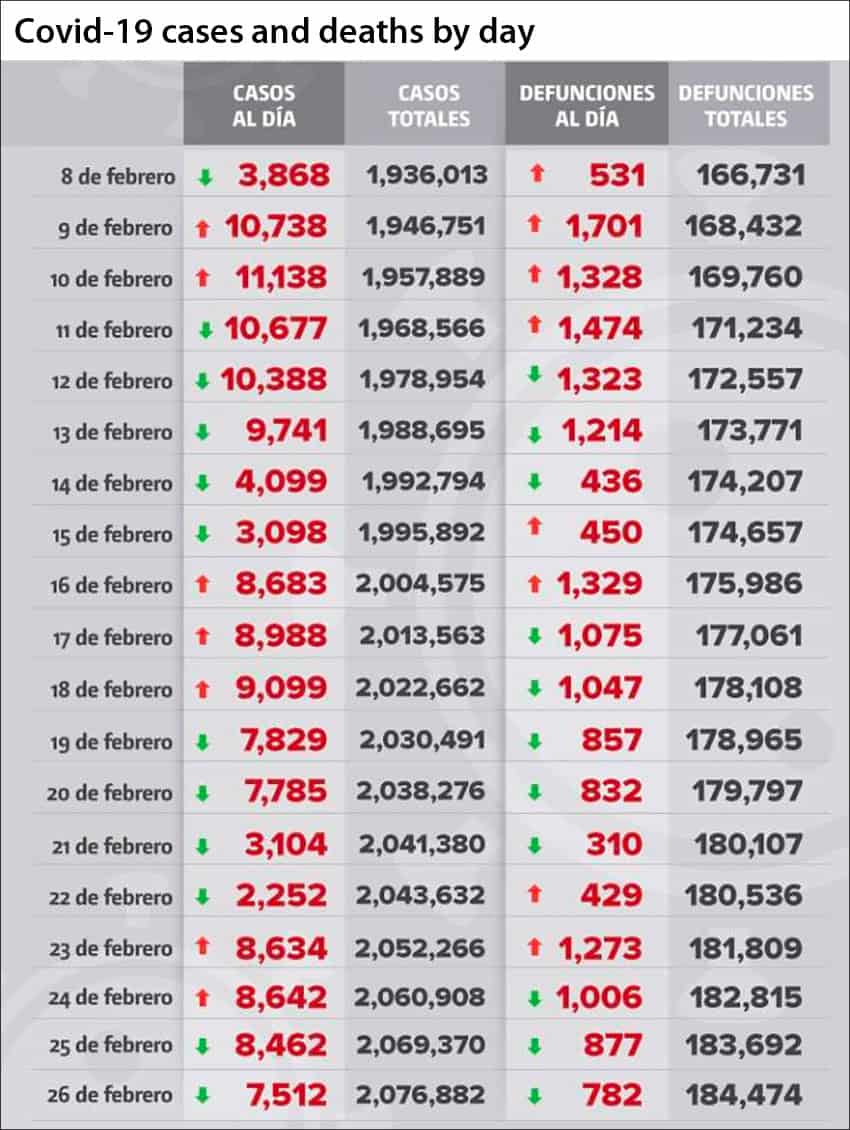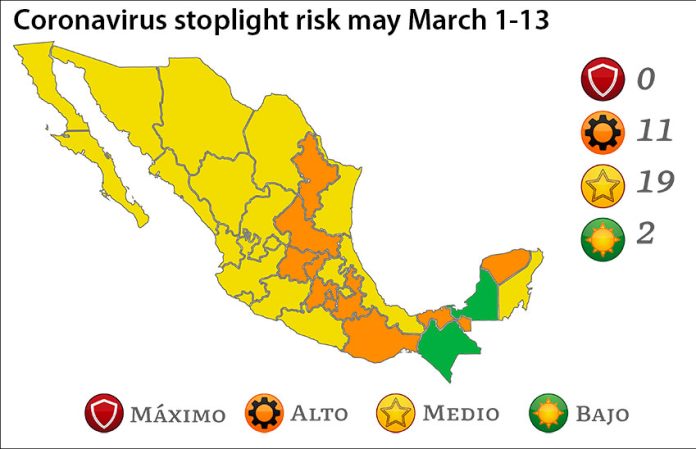There will be no red light maximum risk states in Mexico for the next two weeks after the federal government presented an updated coronavirus stoplight map on which the majority of the states are painted medium risk yellow.
Guanajuato and Guerrero, the only red light states on the map currently in effect, will both switch to yellow on Monday, skipping the orange light high risk designation.
Twenty of Mexico’s 32 states are yellow, an increase of 12.
The other 18 are Baja California, Sonora, Chihuahua, Durango, Sinaloa and Tamaulipas, all of which are already yellow and will remain that color for the next two weeks, and Baja California Sur, Coahuila, Zacatecas, Aguascalientes, Jalisco, Nayarit, Veracruz, Hidalgo, Michoacán, Colima, Tlaxcala and Quintana Roo, which will switch from orange to yellow on Monday.
There will be 10 orange light states as of Monday, a reduction of 11 compared to the current situation, and two green light low risk states, an increase of one.

The orange states for the next two weeks will be Nuevo León, San Luis Potosí, Querétaro, México state, Mexico City, Morelos, Puebla, Oaxaca, Yucatán and Tabasco. The first nine states are already orange and will remain that color while the risk level in Tabasco has been raised from yellow to orange.
The two green light states as of Monday will be Chiapas and Campeche. Chiapas is already green while Campeche will return to that color after remaining at the yellow light level for the past month.
Each stoplight color, determined by the Health Ministry using 10 different indicators including case numbers and hospital occupancy levels, is accompanied by recommended restrictions to slow the spread of the virus but it is ultimately up to state governments to decide on their own restrictions.
In Mexico City, museums and theaters will be permitted to reopen starting Monday but their capacity will be limited to just 20% of normal levels.
Presenting the updated map at Friday night’s coronavirus press briefing, health promotion chief Ricardo Cortés said that hospital occupancy levels are trending downward and that the epidemic curve is on the wane across the whole country.
Only 30% of general care hospital beds set aside for coronavirus patients are currently occupied while 34% of those with ventilators are in use. Mexico City and Puebla are the only two states where more than half of general care beds are taken, with occupancy rates of 56% and 52%, respectively. With an occupancy rate of 59% for beds with ventilators, Mexico City is the only state where more than half of such beds are in use.
Hospital occupancy rates have declined markedly in the capital over the past month after they reached critical levels in late January.
New case numbers have also dropped significantly this month. The Health Ministry reported a daily average of 8,178 new cases in the first 26 days of February, a 42% decline compared to January, which was the worst month of the pandemic for both cases and Covid-19 deaths.
The accumulated tally rose by 7,512 on Friday to 2.07 million cases, while the official death toll increased to 184,474 with 782 additional fatalities registered.
The average number of daily deaths reported in the first 26 days of the month was 998, a 5% decline compared to January.
Almost 2.3 million doses of Covid-19 vaccines have been administered since Mexico’s vaccination program began on December 24, according to Health Ministry data presented Friday night. About 57% of those doses have been used to inoculate health workers while 42% have gone to seniors and almost 1% to teachers.
Mexico has administered 1.8 doses per 100 people, according to a New York Times vaccinations tracker, the sixth highest rate in Latin America after Chile, Brazil, Panama, Argentina and Costa Rica. The United States has administered 21.2 doses per 100 people while Israel leads the world with 89.6 doses per 100 inhabitants already given.
Mexico has received about 3.8 million doses of vaccines after a shipment of 800,000 Sinovac shots arrived in Mexico City early Saturday morning. About 852,000 Pfizer doses are expected to arrive on Tuesday.
The government has agreements to acquire 232 million mainly two-shot vaccine doses and more than 100 million are expected to arrive before the end of May.
